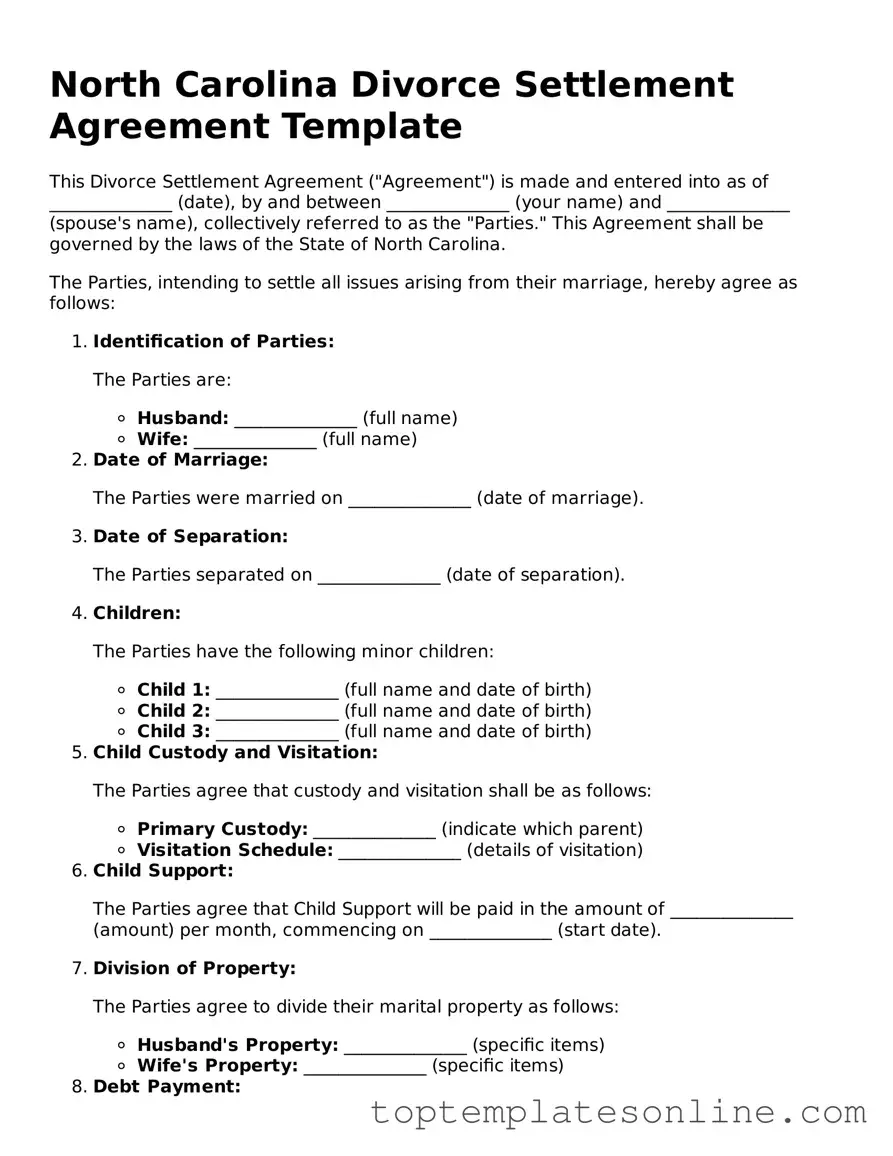Blank Divorce Settlement Agreement Template for North Carolina State
The North Carolina Divorce Settlement Agreement form is a legal document that outlines the terms agreed upon by both parties during a divorce. This agreement covers various aspects, including the division of property, child custody, and support obligations. Understanding this form is essential for ensuring that both parties' rights and responsibilities are clearly defined and upheld.
Customize Divorce Settlement Agreement Here
